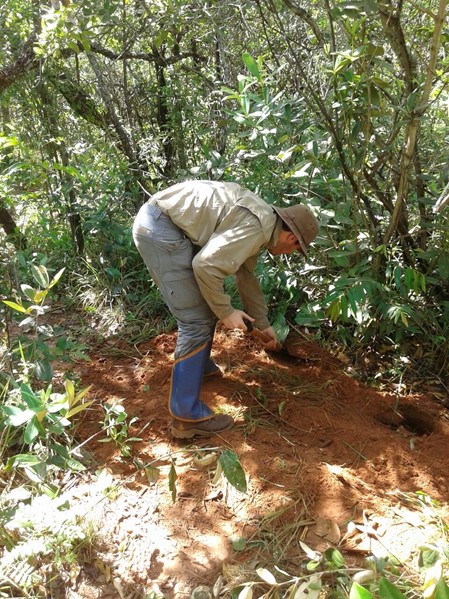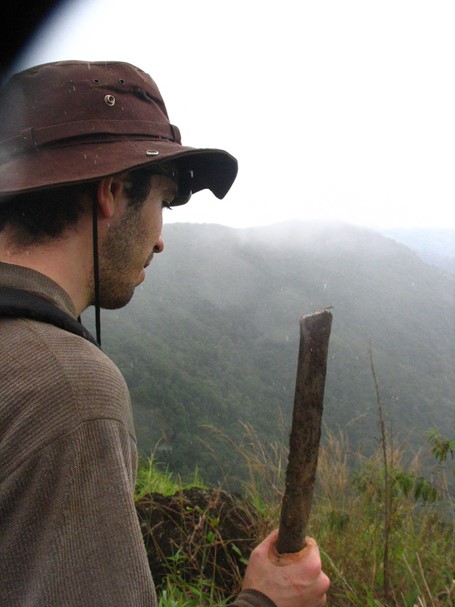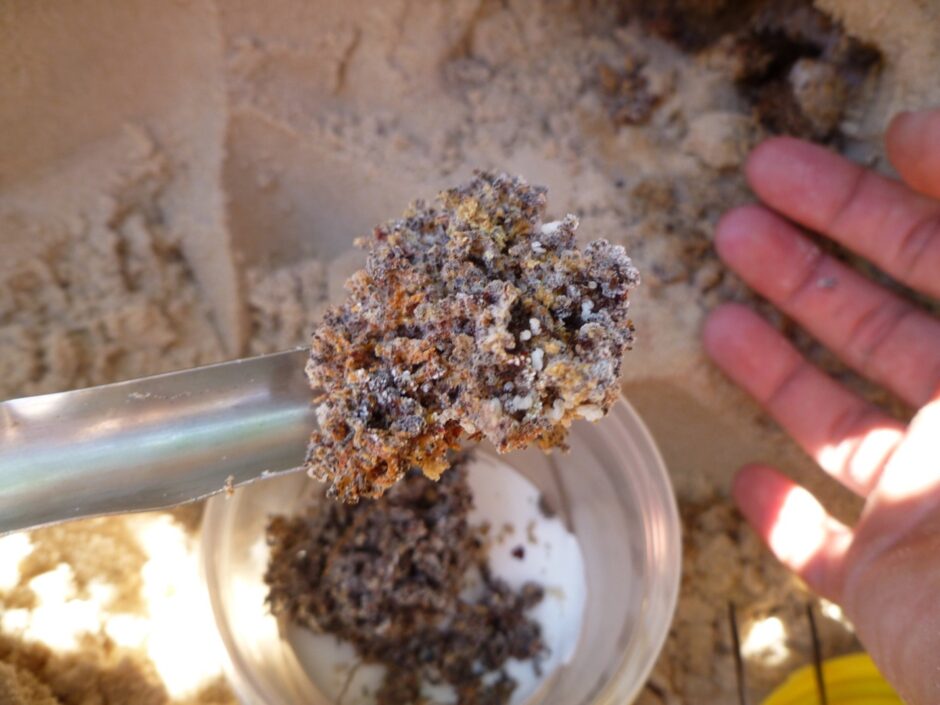School of Forest, Fisheries, and Geomatics Sciences, University of Florida
Contact
rodriguesa@ufl.edu
andre.rodrigues@unesp.br
Research Summary
I study fungi living in symbiosis with insects. I’m currently a postdoctoral associate at Hulcr’s Lab. My focus in his laboratory is to explore the ambrosia beetle-fungal interactions, particularly the beetle species with no visible specialized structures (the so-called mycangia) for fungal transmission. In Brazil, my lab studies the symbiosis between attine ants and the fungi they cultivate for food. Using observational and experimental evidence, my students and I are unraveling the taxonomical diversity, ecology, and evolution of fungal associates in attine ant colonies, particularly fungi in the genus Escovopsis and allied genera.
Short bio & Education
- 2011-present: Associate professor at São Paulo State University (UNESP), Rio Claro, Brazil.
- 2010–2011: Associate professor at Santa Cruz State University (UESC), Ilheus, Brazil.
- 2005–2009: Ph.D. in Applied Microbiology, Sao Paulo State University (UNESP), Rio Claro, Brazil.
- 2005–2006: Visiting scholar at The University of Texas at Austin (USA).
- 2002–2004: M.Sc. in Applied Microbiology, Sao Paulo State University (UNESP), Rio Claro, Brazil.
- 1998–2002: B.S. in Biology, Federal University of Sao Carlos (UFSCar), Brazil.
• for comprehensive list: www.microbiorum.com.br
Montoya, Q. V., Martiarena, M. J. S., Bizarria, R., Gerardo, N. M., Rodrigues, A. (2021) Fungi inhabiting attine ant colonies: reassessment of the genus Escovopsis and description of Luteomyces and Sympodiorosea gens. nov. IMA Fungus https://doi.org/10.1186/s43008-021-00078-8
• Jiménez-Gómez, I., Barcoto, M. O., Montoya, Q. V., Goes, A. C., Monteiro, L. S. V. E., Bueno, O. C., Rodrigues, A. (2021) Host susceptibility modulates Escovopsis pathogenic potential in the fungiculture of higher attine ants. Frontiers in Microbiology https://doi.org/10.3389/fmicb.2021.673444
• Arab, A., Moreira, E. A., Persinoti, G., Menezes, L., Paixao, D. A., Alvarez, T., Cairo, J. P. L. F., Squina, F. M., Costa-Leonardo, A. M., Rodrigues, A., Sillam-Dusses, D. (2021) Complementary contribution of fungi and bacteria to lignocellulose digestion in the food stored by a neotropical higher termite. Frontiers in Ecology and Evolution https://doi.org/10.3389/fevo.2021.632590
• Barcoto, M. O., Carlos-Shanley, C., Fan, H., Ferro, M., Nagamoto, N. S., Bacci, M., Currie, C. R., Rodrigues A. (2020) Fungus-growing insects host a distinctive microbiota apparently adapted to the fungiculture environment. Scientific Reports https://doi.org/10.1038/s41598-020-68448-7
• Bizarria, R. Jr., Nagamoto, N. S., Rodrigues, A. (2020) Lack of fungal cultivar fidelity and low virulence of Escovopsis trichodermoides. Fungal Ecology https://doi.org/10.1016/j.funeco.2020.100944
• Goes, A. C., Barcoto, M. O., Kooij, P., Bueno, O. C., Rodrigues, A. (2020) How do leaf-cutting ants recognize antagonistic microbes in their fungal crops? Frontiers in Ecology and Evolution https://doi.org/10.3389/fevo.2020.00095
• Montoya, Q. V., Sutta Martiarena, M. J., Polezel, D. A., Kakazu, S., Rodrigues, A. (2019) More pieces to a huge puzzle: Two new Escovopsis species from fungus gardens of attine ants. MycoKeys https://doi.org/10.3897/mycokeys.46.30951
• Custodio, B. C., Rodrigues, A. (2019) Escovopsis kreiselii specialization to its native hosts in the fungiculture of the lower attine ant Mycetophylax morschi. Antonie van Leeuwenhoek https://doi.org/10.1007/s10482-018-1158-x
• Solomon, S. E., Sosa-Calvo, J., Lopes, C. T., Rodrigues, A., Vasconcelos, H. L., Bacci Jr, M., Rabeling, C., Mueller, U. G., Schultz, T. R. (2019) The molecular phylogenetics of Trachymyrmex Forel ants and their fungal cultivars provide insights into the origin and coevolutionary history of `higher attine’ ant agriculture. Systematic Entomology https://doi.org/10.1111/syen.12370
• Lacerda, L. T., Gusmao, L. F. P., Rodrigues, A. (2019) Fungal communities in different aged leaves of Eucalyptus microcorys F. Muell. Brazilian Journal of Botany https://doi.org/10.1007/s40415-019-00557-8
• Osti, J. F., Rodrigues, A. (2018) Escovopsioides as a fungal antagonist of the fungus cultivated by leafcutter ants. BMC Microbiology https://doi.org/10.1186/s12866-018-1265-x
• Flórez, L. V., Scherlach, K., Miller, I. J., Rodrigues, A., Kwan, J. C., Hertweck, C., Kaltenpoth, M. (2018) An antifungal polyketide associated with horizontally acquired genes supports symbiont-mediated defense in Lagria villosa beetles. Nature Communications https://doi.org/10.1038/s41467-018-04955-6
• Bizarria, R., Moia, I. C., Montoya, Q. V., Polezel, D. A., Rodrigues, A. (2018) Soluble compounds of filamentous fungi harm the symbiotic fungus of leafcutter ants. Current Microbiology https://doi.org/10.1007/s00284-018-1566-1
• Lacerda, L. T., Gusmao, L. F. P., Rodrigues, A. (2018) Diversity of endophytic fungi in Eucalyptus microcorys assessed by complementary isolation methods. Mycological Progress https://doi.org/10.1007/s11557-018-1385-6
• Oliveira, T. B., Gostincar, C., Gunde-Cimerman, N., Rodrigues, A. (2018) Genome mining for peptidases in heat-tolerant and mesophilic fungi and putative adaptations for thermostability. BMC Genomics https://doi.org/10.1186/s12864-018-4549-5
• Correia, A. M. L., Lira, S. P., Assis, M. A., Rodrigues, A. (2018) Fungal endophyte communities in Begonia species from the Brazilian atlantic rainforest. Current Microbiology https://doi.org/10.1007/s00284-017-1400-1
• Flórez, L. V., Scherlach, K., Gaube, P., Ross, C., Sitte, E., Hermes, C., Rodrigues, A., Hertweck, C., Kaltenpoth, M. (2017) Antibiotic-producing symbionts dynamically transition between plant pathogenicity and insect-defensive mutualism. Nature Communications https://doi.org/10.1038/ncomms15172
• Barcoto, M. O., Pedrosa, F., Bueno, O. C., Rodrigues, A. (2017) Pathogenic nature of Syncephalastrum in Atta sexdens rubropilosa colonies. Pest Management Science https://doi.org/10.1002/ps.4416
• Varanda-Haifig, S. S., Albarici, T. R., Nunes, P. H., Haifig, I., Vieira, P. C., Rodrigues, A. (2017) Nature of the interactions between hypocrealean fungi and the mutualistic fungus of leaf-cutter ants. Antonie van Leeuwenhoek https://doi.org/10.1007/s10482-016-0826-y
• Montoya, Q. V., Meirelles, L. A., Chaverri, P., Rodrigues, A. (2016) Unraveling Trichoderma species in the attine ant environment: description of three new taxa. Antonie van Leeuwenhoek https://doi.org/10.1007/s10482-016-0666-9
• Meirelles, L. A., Mcfrederick, Q. S., Rodrigues, A., Mantovani, J., Rodovalho, C. M., Ferreira, H., Bacci Jr., M., Mueller, U. G. (2016) Bacterial microbiomes from vertically-transmitted fungal inocula of the leaf-cutting ant Atta texana. Environmental Microbiology Reports https://doi.org/10.1111/1758-2229.12415
• Pereira, J. S., Costa, R. R., Nagamoto, N. S., Forti, L. C., Pagnocca, F. C., Rodrigues, A. (2016) Comparative analysis of fungal communities in colonies of two leaf-cutting ant species with different substratum preferences. Fungal Ecology https://dx.doi.org/10.1016/j.funeco.2016.03.004
• Duarte, A. P. M., Ferro, M., Rodrigues, A., Bacci, M. Jr., Nagamoto, N. S., Forti, L. C., Pagnocca, F. C. (2016) Prevalence of the genus Cladosporium on the integument of leaf-cutting ants characterized by 454 pyrosequencing. Antonie van Leeuwenhoek https://doi.org/10.1007/s10482-016-0724-3
• De Beer, Z. W., Marincowitz, S., Duong, T. A., Kim, J. J., Rodrigues, A., Wingfield, M. J. (2016) Hawksworthiomyces gen. nov. (Ophiostomatales), illustrates the urgency for a decision on how to name novel taxa known only from environmental nucleic acid sequences (ENAS). Fungal Biology http://dx.doi.org/10.1016/j.funbio.2016.07.004




